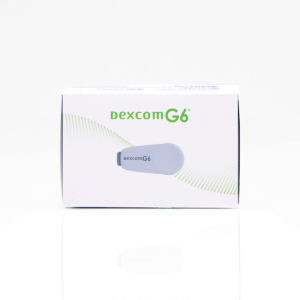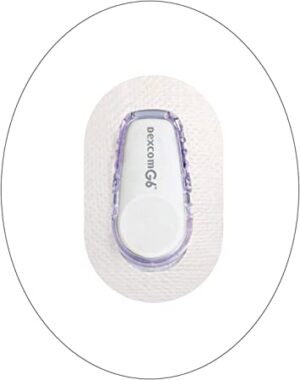Monitoring your blood glucose levels carefully is essential for efficient diabetes control and favorable health results. Regular monitoring of blood sugar levels can help identify any fluctuations or trends that require adjustment in medication, diet, or exercise. It is suggested to check one’s blood sugar level many times a day, particularly before and after meals, and to maintain a record of the results. This record could help detect any regularities or trends that require extra attention.
Furthermore, it is necessary to stay in contact with a healthcare specialist consistently to go over any worries or modifications in blood sugar levels. This can help to guarantee that drugs and dosages are suitable and effective in taking care of diabetes. Maintaining a healthy lifestyle, incorporating a nutritious diet, frequent exercise, and managing stress, can additionally assist to manage blood sugar levels. By keeping track of blood sugar levels and collaborating closely with a healthcare provider, those with diabetes can efficiently manage their condition and achieve great health results.
Types Of Blood Sugar Testing Kits
There are several types of blood sugar testing kits available to individuals with diabetes for effective management of their condition. The most common type of blood sugar testing kit is a glucose meter, which measures blood sugar levels from a small blood sample obtained by pricking the finger.
Continuous glucose monitoring (CGM) systems are also available, which measure blood sugar levels continuously through a small sensor placed under the skin. Some CGM systems can even send real-time data to a smartphone or other device.
Another type of blood sugar testing kit is a disposable patch that measures blood sugar levels through the skin using a small sensor. Additionally, some insulin pumps have built-in blood sugar testing capabilities.
It is important to consult with a healthcare provider to determine which type of blood sugar testing kit is best suited for an individual’s needs. By using the appropriate blood sugar testing kit, individuals with diabetes can effectively monitor their blood sugar levels, make informed decisions about their health, and maintain optimal health outcomes.
How To Check Blood Sugar At Home Naturally?
Monitoring your blood sugar levels at home is a crucial aspect of controlling your diabetes. This step is essential in ensuring that you are administering the correct insulin dosage and making the appropriate dietary and lifestyle modifications to keep your diabetes in check. Numerous natural and safe methods are available for monitoring your blood sugar levels at home.
One of the most common methods of checking blood sugar at home is using a home glucose meter. These devices measure the amount of glucose in your blood and provide a numerical reading that you can compare to your target range. To use the device, you will need a lancet, a test strip, and the meter itself. Make sure that you follow the instructions carefully and use a new lancet each time to get the most accurate reading.
Another way to naturally check your blood sugar at home is through a urine test. This test measures the amount of glucose in your urine which can be done with a test strip or a dipstick. You will need to collect a sample of your urine in a cup, dip the test strip or dipstick in the urine, and compare the results with the chart provided by your doctor or pharmacist.
Finally, you can check your blood sugar at home naturally by following a calorie-counting diet. By keeping track of the calories you are consuming, you can determine how much insulin you need to take to keep your blood sugar in the right range.
Steps For Using A Blood Sugar Testing Kit
Using a blood sugar testing kit is a critical part of diabetes management. Understanding and carefully following the steps outlined below on using a blood sugar testing kit is essential for accurate results and effective diabetes management.
- Ensure that equipment is in good working condition and test strips are not expired or damaged.
- Clean your hands thoroughly before pricking your finger to obtain a small blood sample.
- Apply the blood sample to the test strip and insert it into the testing device.
- After a few seconds, the device will display the blood sugar level.
- Keep a record of the results and understand how to interpret the readings.
Additionally, it is necessary to understand the factors that can affect blood sugar levels, such as food intake, exercise, stress, and medication. By following these steps and understanding the basics of blood sugar testing, individuals with diabetes can effectively monitor their blood sugar levels and make informed decisions about their health.
Interpreting Blood Sugar Results
Interpreting blood sugar results is a crucial part of diabetes management, as it allows individuals to make informed decisions about their health and adjust their management strategies accordingly. Blood sugar results are typically expressed as a numerical value, and the range of normal blood sugar levels can vary depending on factors such as age, gender, and overall health status.
Generally, a fasting blood sugar level of 70-100 mg/dL is considered normal, while levels above 126 mg/dL are indicative of diabetes. It is important to understand that blood sugar levels can fluctuate throughout the day, and several factors can influence blood sugar levels. Therefore, it is essential to keep a record of blood sugar results over time and look for any patterns or trends that require further attention. By learning to read and interpret the readings of their blood sugar levels and the components that can affect them, people with diabetes can successfully manage their illnesses and attain positive health outcomes.
Tips For Staying On Track With Blood Sugar Testing
Staying on track with blood sugar testing is an important part of managing diabetes. Regular testing can not only help you monitor changes in your blood sugar levels but also help you adjust your treatment plan if needed. Here are some tips to help you stay on track with blood sugar testing:
- Establish a consistent testing routine to ensure regular monitoring of your blood sugar levels, even during busy periods.
- Maintain a record of your test results to track your progress over time, enabling a better understanding of your blood sugar levels.
- Familiarize yourself with the target numbers for your blood sugar levels, as this knowledge will help you make appropriate adjustments to your treatment plan.
- Consult your doctor about any fluctuations in your blood sugar levels, ensuring open communication and addressing any concerns.
- Remember to test your blood sugar at various times throughout the day.
- Prioritize testing your blood sugar before engaging in physical exercise to ensure stability in your levels.
- Ensure you have the necessary supplies, including test strips, lancets, and a glucometer, readily available for accurate blood sugar testing.
- Follow up with your doctor if you encounter difficulties in adhering to your testing schedule or if your results deviate from the expected range.
By following these tips, you can stay on track with your blood sugar testing and ensure that you’re managing your diabetes in the best way possible.



